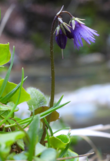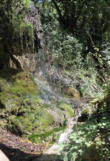Collections
Sort by:
Collection
Edited by Carmelo Maria Musarella, Giovanni Spampinato, Eusebio Cano, Carlos José Pinto Gomes
"Biodiversity Management and Conservation" is the name of the International Seminar which is organized in some European countries since 2007 with the aim of creating relationships and discussions between junior and senior researchers on these increasingly pressing issues. In the year 2022, the XIV e ...
Papers published: 5
| Total pages: 82
Taxa:
Ophioglossales (1), Angiospermae (5)
Subject:
Collection
Submission deadline: 30 April 2025
Edited by Silvia Poponessi, Annalena Cogoni, Marko S. Sabovljevic, Marta Puglisi
Bryophytes are a group of land plants of small size but with a large ecological impact. Although the bryophytes display high species diversity, a major limitation in their use as study organisms has been the lack of basic floristic, ecological, and alpha-taxonomic knowledge in many regions. The dist ...
Papers published: 1
| Total pages: 12
Taxa:
Bryata (1)
Permanent collection
Edited by Gianmaria Bonari, Silvia Del Vecchio, Fotios Xystrakis and Federico Fernández-González
European knowledge of plant communities is globally by far the most accurate thanks to the long vegetation survey tradition. This expertise translated into European policies and entailed a number of applied conservation measures. The analysis of the variability of vegetation across ecological gradie ...
Papers published: 8
| Total pages: 106
Taxa:


